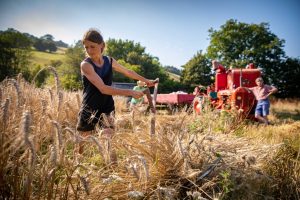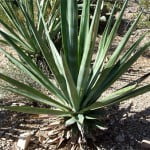Stages of Soybean Development
Muhammad Nazar1* Muhammad Roman1
1Department of Agronomy, University of Agriculture Faisalabad, Pakistan
Correspondence E: Mail: [email protected]
Introduction:
Soybean development is a continuous process that starts from germination and ends at maturity of seeds. During its life time its growth and development is affected by many factors that may enhance or decrease its productivity. Some of those are environmental factors like temperature, relative humidity, wind and radiations and others are related with production process.
Purpose of Stage Descriptions:
It is important for a person engaged in production process of soybean to know about the different stages of soybean. Every crop has its critical stages of growth and development at which application of inputs should be taken under care. For example irrigation and fertigation of crop requires to be done at proper stages. An herbicide manufacturer may recommend application of the product at a specific stage
Node identification:
Determination of vegetative and reproductive stages requires node identification. A node is the point of the stem where the leaf develops (fig. 1).When a leaf drops from the plant, the node can be identified by a small scar that remains on the stem. Nodes, not leaves, are used for stage determination because they are permanent.
The cotyledonary nodes are the first nodes located directly opposite each other on the lower part of the main stem (fig. 1). The two unifoliolate nodes are located directly opposite each other, immediately above the cotyledonary nodes (fig. 1). All nodes above the unifoliolate nodes have trifoliolate leaves. The soybean plant terminates its growth on the main stem with a terminal node bearing a trifoliolate leaf.
| Fig. 1. Parts of a soybean plant |
Vegetative Stages:
Vegetative stages are described from the time the plant emerges from the soil and are determined by counting the number of nodes on the main stem, beginning with the unifoliolate nodes, that have or have had a fully developed leaf.Each stage description (table 1) is given a vegetative stage (V) designation and an abbreviated title to facilitate communication.
Table 1. Description of vegetative stages.
| Stage no. | Abbreviated stage title | Description |
| VE | Emergence | Cotyledons above the soil surface |
| VC | Cotyledon | Unifoliolate leaves unrolled sufficiently so the leaf edges are not touching |
| V1 | First-node | Fully developed leaves at unifoliolate nodes |
| V2 | Second-node | Fully developed trifoliolate leaf at node above the unifoliolate nodes |
| V3 | Third-node | Three nodes on the main steam with fully developed leaves beginning with the unifoliolate nodes |
| V(n) | nth-node | n number of nodes on the main stem with fully developed leaves beginning with the unifoliolate nodes. n can be any number beginning with 1 for V1, first-node stage |
Reproductive stages:
Reproductive stages are based on flowering, pod development, seed development, and plant maturation. Each stage description is given a reproductive stage (R) number and an abbreviated title (table 2) As the soybean plant matures, leaf and pod yellowing generally occur simultaneously. In some circumstances, however, leaves may remain green after the pods have attained their mature pod colour.
Table 2. Description of reproductive stages.
| Stage no. | Abbreviated stage title | Description |
| R1 | Beginning bloom | One open flower at any node on the main stem |
| R2 | Full bloom | Open flower at one of the two uppermost nodes on the main stem with a fully developed leaf |
| R3 | Beginning pod | Pod 5 mm (3/16 inch) long at one of the four uppermost nodes on the main stem with a fully developed leaf |
| R4 | Full pod | Pod 2 cm (3/4 inch) long at one of the four uppermost nodes on the main stem with a fully developed leaf |
| sR5 | Beginning seed | Seed 3mm (1/8 inch) long in a pod at one of the four uppermost nodes on the main stem with a fully developed leaf |
| R6 | Full seed | Pod containing a green seed that fills the pod cavity at one of the four uppermost nodes on the main stem with a fully developed leaf |
| R7 | Beginning maturity | One normal pod on the main stem that has reached its mature pod colour |
| R8 | Full maturity | Ninety-five percent of the pods that have reached their mature pod colour. Five to ten days of drying weather are required after RB before the soybeans have less than 15 percent moisture |








